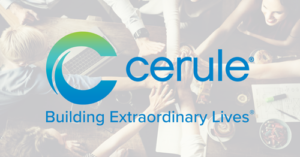New CDC Report Shows Strokes on the Rise Among Younger Adults (Under 40)—What's Behind the Increase?

 Risk of Stroke for Younger people
Risk of Stroke for Younger people
The rate of young people having strokes has increased, according to
a new CDC report.
Researchers pointed to more young people having obesity and
hypertension as a reason for rising numbers.
You can mitigate your risk of stroke by making lifestyle changes, such
as exercising regularly and eating a diet rich in fruits and vegetables.
More young people are having strokes, according to a new report from the
Centers for Disease Control and Prevention (CDC).
The CDC found that, compared to rates from about a decade ago, the risk
of stroke has increased by about 15% among Americans younger than 65.
While adults 65 and older still have the highest rate of strokes, their
incidence of stroke remained steady across the same time frame. 1
The report, published in Morbidity and Mortality Weekly Report. points to an
increase in stroke risk factors such as obesity and type 2 diabetes in
younger adults as the reason for the rising numbers.
“This trend is certainly alarming and one we have also noticed in our own
practice,” Charles Matouk, MD, an associate professor of neurosurgery and
chief of neurovascular surgery at Yale School of Medicine who was not
involved with the report, told Health.
Here’s what you need to know about the report, including how to reduce
your stroke risk.
What Is a Stroke, Exactly?
A stroke is a medical emergency characterized by acute neurological
symptoms. There are two main types: ischemic stroke and hemorrhagic
stroke. 2
An ischemic stroke, often called a brain attack, occurs when a clot, usually
traveling from somewhere else in your body, like your heart, blocks a brain
artery. It accounts for nearly all stroke cases. A hemorrhagic stroke, on the
other hand, happens when a blood vessel in the brain ruptures.
A stroke can affect every part of the body, Matouk said. However, a key
feature is that symptoms come on suddenly. These abrupt changes can
include new numbness or weakness on one side of the body, trouble
speaking or understanding speech, confusion, loss of balance and
coordination, and vision loss. Severe headaches with an unknown cause
can also be a sign.
While the symptoms of a stroke are generally the same for men and
women, some studies have shown that women are more likely to
experience non-traditional stroke symptoms such as generalized
weakness, mental status changes, headache or migraine, and loss of
consciousness.
More Strokes Among the Young
For the CDC report, researchers compared self-reported health data from
2011 to 2013 to information collected between 2020 and 2022. They found
that the prevalence of stroke among people aged 18 to 44 and 45 to 64
increased by 14.6% and 15.7%, respectively. 1
During the same period, overall stroke prevalence increased by 7.8%
nationwide.
Rates increased for both men and women. The rate rose the most for
Native Hawaiians/Pacific Islanders (52.3%), followed by those who were
Hispanic (16.1%), Black (7.8%), and White (7.2%). The rate fell for people
who are American Indian/Alaska Native (-2%) and Asian (-11.8%).
Adults with less than a high school education saw the single largest
increase in stroke prevalence of any other group, at 18.2%, and 10 states
saw a statistically significant increase as well.
Although stroke rates among the young have increased, it’s still relatively
uncommon for younger adults to have a stroke—the chances of someone
aged 18 to 44 having one is 0.9%. That percentage rises to 3.8 for
someone who’s 45 to 64.
What’s Behind the Increase?
“The increased prevalence of adults reporting that they had a stroke could
indicate increased stroke survival due to improvements in stroke treatment
and care,” Omoye Imoisili, MD, report author and medical officer at the
CDC’s Division of Heart Disease and Stroke Prevention, told Health.
“However, this increase in stroke prevalence also corresponds with
increases of other cardiovascular risk factors” over the past couple of
decades.
Those risk factors include obesity, hypertension, high cholesterol, diabetes,
and heart disease. 1
Over time, these conditions cause harmful deposits to form in your blood
vessels, making it more difficult for enough blood to flow through your
arteries. This increases the risk that a deposit will break off and form a clot
that will travel to the brain, resulting in a stroke. 4
An increase in behaviors such as smoking, being sedentary, and using
alcohol excessively, could also account for the increase in stroke frequency
among young people, Matouk added. These lifestyle habits can raise the
risk of developing chronic conditions that can lead to stroke.
How to Prevent and Respond to a Stroke
While you can’t control some factors that raise your odds of having a
stroke, such as genes, others can be adjusted to help reduce your risk.
Regular exercise can lower your chances, as can eating a diet low in sugar
and salt and rich in fruits and vegetables. You also want to avoid smoking
or quit if you’ve already started. 4
Matouk stressed the importance of managing chronic conditions such as
obesity or diabetes with the help of your primary care physician.
If you suspect that you or someone you’re with is having a stroke, it’s
crucial to “call 911 immediately,” Brandon Giglio, MD, a vascular neurologist
and director of vascular neurology at NYU Langone Health, told Health.
“There are treatments for strokes, but they are most effective and only safe
within several hours of symptoms beginning,” he said.
Added Matouk: “While strokes are on the rise for all age groups, prompt
recognition and immediate medical attention can tremendously improve the
outcome and reduce future disability of a stroke.”
By Lauryn Higgins
Fact checked by
Nick Blackmer
Published on June 26, 2024

RECOMMENDED READS

“Use of Rx meds is 3rd leading cause of death.
“The use of prescription medication is the third leading cause of death in the us.”
From the book (Death by prescription)
Dr recommends Stem Enhance
“Stem Enhance (TM) is a product that promotes the release of adult stem cells from the bone marrow. There has been recent work showing real health benefits from increased circulating levels of adult stem cells.
Bone marrow stem cells can participate in restoring kidney tissue
as seen in From the book by Damon P. Miller II, MD, Carlyle Coash & Adam Miller(Stem Cells Heal Your Eyes) Page 188
“Cracking the Stem Cell Code by Christian Drapeau, MSc In fact, supporting the natural release of SCs…”
“…But the observations reported herein are not limited to healing, regeneration and repair of the cardiac tissue. A higher number of circulating stem cells means that more stem cells are available to migrate to any tissue in need of repair. In fact, supporting the natural release of stem cells from the bone marrow could very well prove to be the easiest, safest and most effective way of tapping into the healing potential of stem cells.”
From the Book: Cracking the Stem Cell Code by Christian Drapeau, MSc Page 119
Why Make Us Your Trusted Stem Cell Boost Partner
Choose us if you are you sick and tired of aches and pain? Add more LIFE to your age.

The Cerule combo of products has given fantastic healing of my clients in the short time of 3 months.
A male, 41 years old with severe back injury suffered 10 years ago: constant pain, not able to walk upright! In 2 days after taking a combo of products, he could stand straight!!!
A female, 80 years old, with 6 months of chronic shoulder pain. She tried drugs and physio with no improvement. In 3 weeks of starting the products, the pain was 80% better and she continues to take a combo of products.
Cerule International
Welcomes Powerhouse
Couple Larry & Rose Wieber
a dynamic couple whose journey of resilience, discovery, and advocacy has led them to a new chapter with Cerule. Born in Spokane, and now living at Keller Ferry in Wilbur, Washington, Larry’s early experiences on his paper route sparked a lifelong interest in sales. His tenure at Proctor & Gamble honed his communication skills, but life took an unexpected turn with a series of eight unsuccessful back surgeries in his twenties.
The Science of it all
Larry’s relentless pursuit of pain relief led him to become a certified supplement nutritionist and life coach under the guidance of Dr. William Sears. However, it was only after undergoing adult stem cell treatment in Mexico that he found significant relief. Inspired by Allan C. Somersall’s book “Amazing Power of Stem Cell Nutrition,” Larry began educating others about the critical role of stem cells in everyday healing.
The couple recently celebrated winning a Gold Medal in Cerule’s Olympics contest and played a pivotal role in Alan Glasser securing the Champion of Champions global title. Their dedication and success exemplify the transformative power of Cerule’s products.
While sharing his story at the Wilbur Senior Center, Larry discovered Cerule’s blue-green algae products from a gentleman who had experienced remarkable results. The Wiebers decided to try Cerule’s products, which not only alleviated Rose’s nighttime driving issues and lower back pain but also provided them with a secondary income as Independent Business Owners (IBOs). Remarkably, for the first time in 50 years, Larry is pain-free.
Larry and Rose are passionate about building a quality team and educating people on the importance of DEA: Diet, Exercise, and Attitude. Their advocacy extends to their involvement with HealthWorx Radio, where they contribute to British Columbia’s top-rated show hosted by pharmacist Alan Glasser every Saturday at 5 pm.
Cerule International is honored to welcome Larry and Rose Wieber. Their journey of overcoming adversity and dedication to promoting health aligns perfectly with our mission. We look forward to achieving great things together.
‘SAIL ON’

